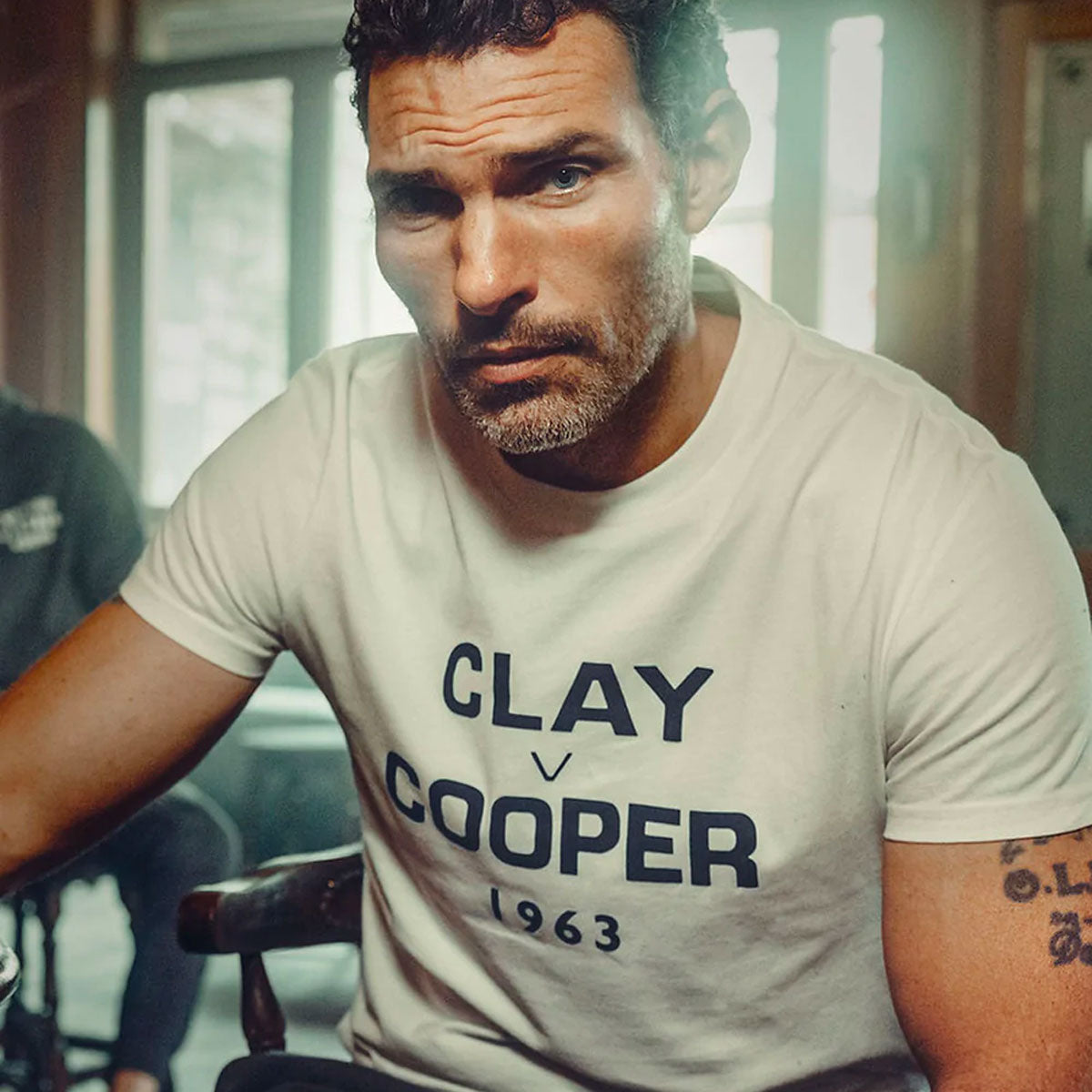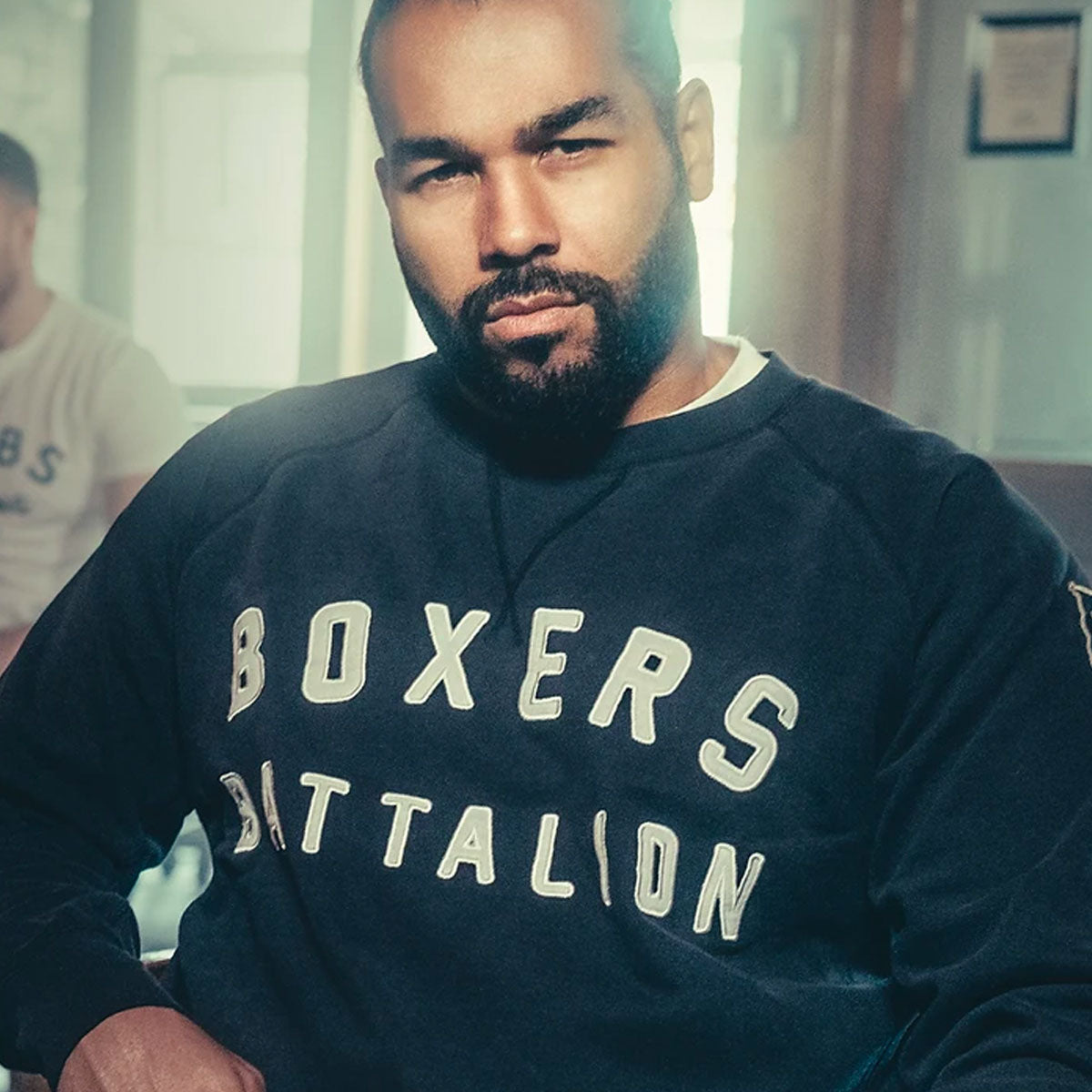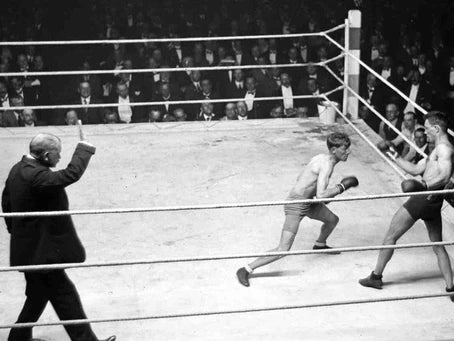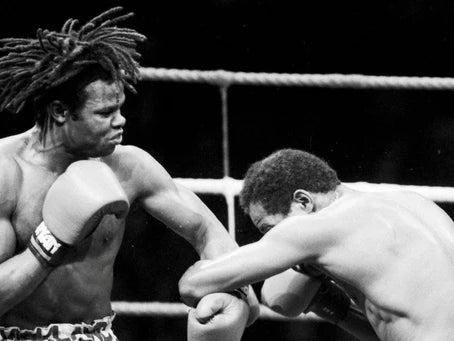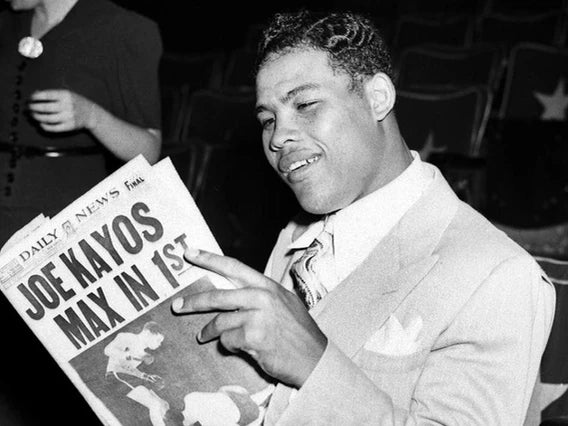By Paul Zanon

When a fighter weighs 112lbs and measures a touch over five feet in height, monikers such as ‘The Mighty Atom,’ and ‘Ghost With The Hammer In His Hand,’ seem incongruous. However, if you scored 100 knockouts in 150 contests, losing only four and boasting an initial unbeaten run of 93 contests (some say 103), you had more than paid your penance to claim those titles. The legend behind the folklore is William James Wilde, known as Jimmy, and is possibly the best flyweight in history to have ever laced up a pair of gloves.
Read far and wide enough and sources will tell you that Wilde participated in over 900 contests, started boxing as young as 12 and at some point probably defeated King Kong. However, we would like to shine a torch on the parts of his career which defined him as one of the finest flyweights of all time, in a career spanning 15 years. He genuinely didn’t need any additional fanfare to what was a simply incredible resume.

Born on 15 May 1892 (a good vintage year for seedling boxers, which also included Jack Dempsey), Wilde, born in the Taff Bargoed Valley, Wales, moved to the village of Tylorstown at a young age with his family. As with many residents from the area, he followed in his father’s footsteps at the ripe age of six and started working in the local colliery, where he met a certain Dai Davies, a former fighter himself.
Wilde eventually lodged at Davies house where he taught the youngblood in the attic, in between Wilde fighting men of all shapes and sizes at the local fairground booths. The Tylorstown Terror went on to marry Davies’ daughter, Elizabeth in 1910, in addition to becoming a father the same year.
Shortly after getting hitched, Wilde made his professional debut on 1 January 1911, at Millfield A.C, Pontypridd, against fellow debutant, Ted Roberts. However, his first five fights didn’t really indicate the menacing figure he would grow into. After knocking out Roberts in the third round, Wilde clocked up three points decisions and one draw.
Intent on leaving a trail of destruction behind him, Wilde fought a further 22 times in 1911 alone, with none of his opponents hearing the final bell. With his manager, Teddy Lewis (Not The Aldgate Sphinx) being the reserve captain of Pontypridd rugby club, it came as no surprise that 25 of the 27 contests in 1911 were in Pontypridd.
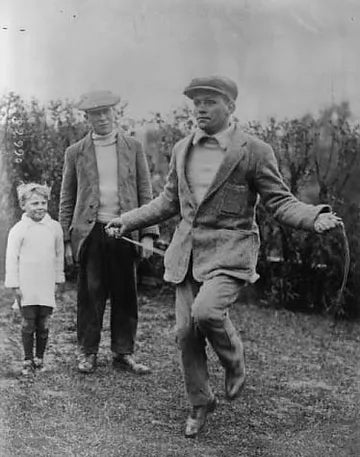
Over the next 24 months, Wilde fought a further 49 times without loss, bringing his tally to 76-0-1. He also walked away from Tylorstown colliery in 1913, dedicating his time to the square ring. Hovering between 94lbs-98lbs (6 stones 10lbs – 7 stones), Wilde fought on a number of unrecognised title bills, including the 108lbs English title against Harry Brooks on 16 December 1913 and the British and World 94lbs titles on 3 January 1914, against Kid Nutter (great name). However, on 30 March 1914, Wilde carved his first notch in the official boxing records by knocking out unbeaten Frenchman Eugene Husson, in six rounds at the National Sporting Club, Covent Garden. He was now the European (EBU) flyweight champion. The same year, Wilde published his first book, ‘Hitting and Stopping. How I won 100 fights.’
Nine months later on 25 January 1915, Wilde, now 94-0-1 took on Tancy Lee for the International Boxing Union (IBU) world flyweight title, in addition to the vacant EBU and British titles. Whilst Scotland’s Lee weighed in half a pound short of the flyweight limit, Wilde was a mere 97lbs (6 stones 13 lbs) and had weighed-in fully dressed. Despite putting up a brave fight, Wilde was knocked out in the seventeenth round of a scheduled 20.
Not one to lick his wounds, Wilde jumped back in the ring on 25 March 1915, got back to his destructive winning ways and was now consistently weighing in between 105lbs -110lbs. He was a man on a mission.
On 14 February 1916, he unofficially claimed the IBU world and National Sporting Club British titles, after Joe Symonds retired in the twelfth round. Symonds had beaten Tancy Lee a few months prior, so this was the right message to send out to the flyweight division. The only debt Wilde had to avenge was the loss against the man who blemished his unbeaten record.

Four months and seven wins later, (which included fighting twice on the same day at Woolwich Dockyard Labour Club on 13 May 1916, knocking out both opponents early doors), Wilde had his eagerly awaited rematch against Lee on 26 June 1916 at the National Sporting Club, Covent Garden. With his newly gained titles on the line, in addition to the EBU strap, Wilde went out in blazing fashion, stopping Lee in the eleventh round and embarked on his second reign as European champion.
In addition to extending his vastly impressive record, Wilde also joined the Army in December 1916 and was posted to Aldershot. The Welshman had been refused entry into the military on a number of occasions previously due to a host of issues, one being cited as ‘being underweight,’ an ailment which certainly didn’t stop his fistic exploits.
Shortly after being stationed in Aldershot, Sergeant Jimmy Wilde was re-deployed to the British Expeditionary Force’s Physical Training and Bayonet School in St Pol, France in the capacity of Army Gymnastics instructor. His principal duty was to ensure soldiers were in peak physical condition, a discipline he was certainly well versed in. He did however continue to box.
Despite boasting an incredible record of 117-1-1 and holding an unofficial claim to world honours, it wasn’t until he beat Italian born New Yorker, Young Zulu Kid that Wilde earned his stripes. The Sportsman reported on the contest held at the Holborn Stadium, London on 18 December 1916. ‘In the eleventh round Wilde sent the Kid to the ropes with a strong left to the jaw. Clinging to the ropes, the American fighter took a dozen body blows and then dropped on one knee. As soon as the Kid regained his feet Wilde shot smashing right and left blows to the jaw, flooring the Kid, whose seconds, without waiting for the count, threw in a towel.’ (The Sportsman - Tuesday 19 December 1916, Page 3.) Wilde was now officially recognised as flyweight champion of the world.
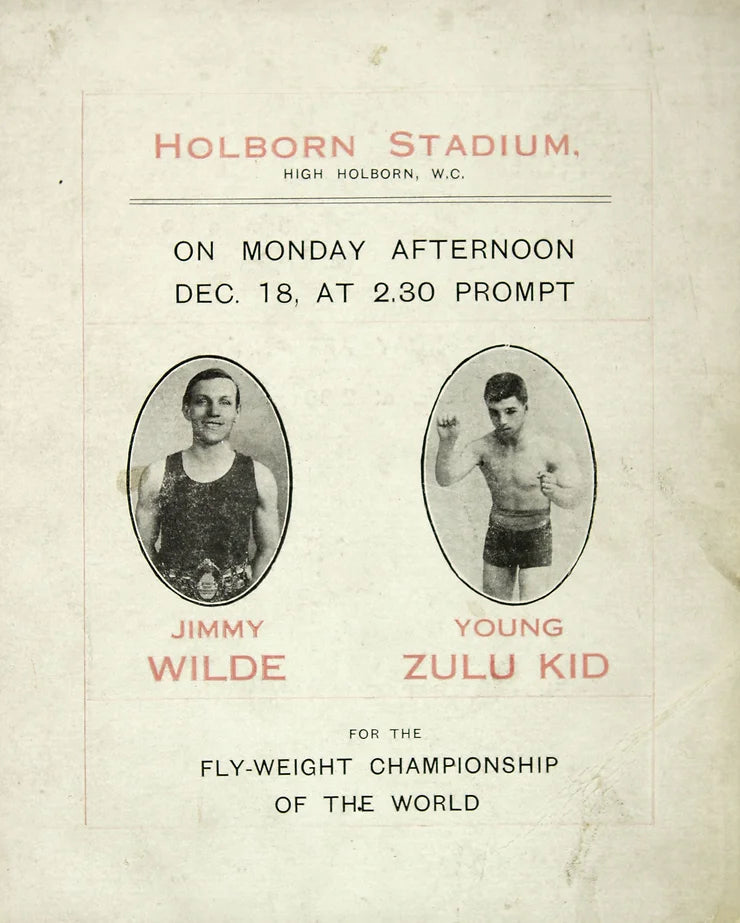
Between 1916-1918, Wilde defended his British strap four times, gaining him the Lonsdale belt outright, twice over, he also defended his European title twice and continued to reign supreme as world flyweight champion. However, the domestic well of flyweight competition was drying up. The United States beckoned for Wales’s favourite fighting son.
On 6 December 1919, Wilde took on ‘Little’ Jackie Sharkey (real name Giovanni Cervati), in front of 8,000 people at the Auditorium, Milwaukee, in a non-sanctioned fight. Giving away 6lbs in weight to the Italian born American, Wilde, the betting favourite, lost his second professional fight over 10 rounds, via a wide newspaper points decision.
Intent on demonstrating to the North Americans that he was a force to be reckoned with, Wilde, despite always being the lighter man, won his next 10 fights, eight of which were in the U.S., two in Canada, including four knockouts. However, after over 130 fights, it was widely believed that the version of Wilde that fought Stateside was no longer the prime fighter from three or fours years previously. Despite being only 28 years old, the Mighty Atom was starting to lose some of his essential spark.
On 13 January 1921, Wilde took on natural bantamweight American Pete Herman, at the Royal Albert Hall, with a star studded audience, which included the Prince of Wales. The New Orleans resident had lost 27 of his 147 bouts at that moment in time and was a genuine threat. It also didn’t help that Herman weighed in 10lbs heavier than Wilde, despite being roughly the same height.

Unfortunately, Wilde suffered a heavy onslaught from the American throughout the 17 rounds, which culminated in the Welshman being knocked out cold. The last blow left Wilde with a nasty concussion and after the contest he decided to go into retirement.

Unfortunately, the lure of a massive £13,000 payday against Filipino legend, Pancho Villa (real name, Francisco Guilledo) tempted Wilde back into the ring. On 18 June 1923, at the Polo Grounds, New York in front of 20,000 spectators, Wilde was outboxed, outpaced and eventually knocked out in the fifth round. His concussion was far worse than his previous loss, suffering long and short memory loss, in addition to not recognising his wife for three weeks after the fight. On a side note, by winning that fight Pancho Villa became the first ever world champion from the Philippines, but very sadly died only two years later at the age of 23, after complications following a tooth extraction.
On 1 January 1924, Wilde officially announced his retirement. In addition to publishing a second book in 1923, ‘The Art of Boxing,’ he released his third and final publication in 1938, his definitive autobiography, ‘Fighting Was my Business.’ The savvy Welshman also experienced success in the cinema business, in addition to be a regular columnist for the News of The World, a pundit and on occasions boxing referee.
1936 proved to be a bad year for The Mighty Atom after virtually his entire boxing trophy collection was stolen from his home in Cricklewood. If that wasn’t bad enough, later that year, as the passenger in his friend’s car, he was hurled from the vehicle after a collision with a van, near Hampstead. He sustained injuries, but thankfully walked away with his life.
In 1965, Wilde was mugged at a railway station in Cardiff. The attack was so brutal, he never fully recovered and spent his remaining fours year in Whitchurch hospital, before passing away on 10 March 1969 at the age of 76. His wife, Elizabeth also passed away during this traumatic period, in 1967.

Partial to a three piece tweed suit, the sartorially sound Welshman has a genuine claim to the best British boxer of all time and possibly the greatest flyweight to have ever stepped into a boxing ring.
Boasting a seven year and four month reign as world champion and the longest unbeaten successive fight record as a professional, Wilde was elected into the International Boxing Hall of Fame in 1992. The achievements from the coal miner’s son from humble beginnings from a century ago may take several generations to match, never mind exceed.
Paul Zanon, has had nine books published, with almost all of them reaching the No1 Bestselling spot in their respective categories on Amazon. He has co-hosted boxing shows on Talk Sport, been a pundit on London Live, Boxnation and has contributed to a number of boxing publications, including, Boxing Monthly, The Ring, Daily Sport, Boxing News, Boxing Social, amongst other publications.

“Wilde’s strength and his hitting power, considering his size and weight, were simply amazing. He was a highly skilled boxer and the power of his punches was almost magical,”
The Ring Magazine, January 1941
When a fighter weighs 112lbs and measures a touch over five feet in height, monikers such as ‘The Mighty Atom,’ and ‘Ghost With The Hammer In His Hand,’ seem incongruous. However, if you scored 100 knockouts in 150 contests, losing only four and boasting an initial unbeaten run of 93 contests (some say 103), you had more than paid your penance to claim those titles. The legend behind the folklore is William James Wilde, known as Jimmy, and is possibly the best flyweight in history to have ever laced up a pair of gloves.
Read far and wide enough and sources will tell you that Wilde participated in over 900 contests, started boxing as young as 12 and at some point probably defeated King Kong. However, we would like to shine a torch on the parts of his career which defined him as one of the finest flyweights of all time, in a career spanning 15 years. He genuinely didn’t need any additional fanfare to what was a simply incredible resume.

Born on 15 May 1892 (a good vintage year for seedling boxers, which also included Jack Dempsey), Wilde, born in the Taff Bargoed Valley, Wales, moved to the village of Tylorstown at a young age with his family. As with many residents from the area, he followed in his father’s footsteps at the ripe age of six and started working in the local colliery, where he met a certain Dai Davies, a former fighter himself.
Wilde eventually lodged at Davies house where he taught the youngblood in the attic, in between Wilde fighting men of all shapes and sizes at the local fairground booths. The Tylorstown Terror went on to marry Davies’ daughter, Elizabeth in 1910, in addition to becoming a father the same year.
Shortly after getting hitched, Wilde made his professional debut on 1 January 1911, at Millfield A.C, Pontypridd, against fellow debutant, Ted Roberts. However, his first five fights didn’t really indicate the menacing figure he would grow into. After knocking out Roberts in the third round, Wilde clocked up three points decisions and one draw.
Intent on leaving a trail of destruction behind him, Wilde fought a further 22 times in 1911 alone, with none of his opponents hearing the final bell. With his manager, Teddy Lewis (Not The Aldgate Sphinx) being the reserve captain of Pontypridd rugby club, it came as no surprise that 25 of the 27 contests in 1911 were in Pontypridd.

Over the next 24 months, Wilde fought a further 49 times without loss, bringing his tally to 76-0-1. He also walked away from Tylorstown colliery in 1913, dedicating his time to the square ring. Hovering between 94lbs-98lbs (6 stones 10lbs – 7 stones), Wilde fought on a number of unrecognised title bills, including the 108lbs English title against Harry Brooks on 16 December 1913 and the British and World 94lbs titles on 3 January 1914, against Kid Nutter (great name). However, on 30 March 1914, Wilde carved his first notch in the official boxing records by knocking out unbeaten Frenchman Eugene Husson, in six rounds at the National Sporting Club, Covent Garden. He was now the European (EBU) flyweight champion. The same year, Wilde published his first book, ‘Hitting and Stopping. How I won 100 fights.’
Nine months later on 25 January 1915, Wilde, now 94-0-1 took on Tancy Lee for the International Boxing Union (IBU) world flyweight title, in addition to the vacant EBU and British titles. Whilst Scotland’s Lee weighed in half a pound short of the flyweight limit, Wilde was a mere 97lbs (6 stones 13 lbs) and had weighed-in fully dressed. Despite putting up a brave fight, Wilde was knocked out in the seventeenth round of a scheduled 20.
Not one to lick his wounds, Wilde jumped back in the ring on 25 March 1915, got back to his destructive winning ways and was now consistently weighing in between 105lbs -110lbs. He was a man on a mission.
On 14 February 1916, he unofficially claimed the IBU world and National Sporting Club British titles, after Joe Symonds retired in the twelfth round. Symonds had beaten Tancy Lee a few months prior, so this was the right message to send out to the flyweight division. The only debt Wilde had to avenge was the loss against the man who blemished his unbeaten record.

Four months and seven wins later, (which included fighting twice on the same day at Woolwich Dockyard Labour Club on 13 May 1916, knocking out both opponents early doors), Wilde had his eagerly awaited rematch against Lee on 26 June 1916 at the National Sporting Club, Covent Garden. With his newly gained titles on the line, in addition to the EBU strap, Wilde went out in blazing fashion, stopping Lee in the eleventh round and embarked on his second reign as European champion.
In addition to extending his vastly impressive record, Wilde also joined the Army in December 1916 and was posted to Aldershot. The Welshman had been refused entry into the military on a number of occasions previously due to a host of issues, one being cited as ‘being underweight,’ an ailment which certainly didn’t stop his fistic exploits.
Shortly after being stationed in Aldershot, Sergeant Jimmy Wilde was re-deployed to the British Expeditionary Force’s Physical Training and Bayonet School in St Pol, France in the capacity of Army Gymnastics instructor. His principal duty was to ensure soldiers were in peak physical condition, a discipline he was certainly well versed in. He did however continue to box.
Despite boasting an incredible record of 117-1-1 and holding an unofficial claim to world honours, it wasn’t until he beat Italian born New Yorker, Young Zulu Kid that Wilde earned his stripes. The Sportsman reported on the contest held at the Holborn Stadium, London on 18 December 1916. ‘In the eleventh round Wilde sent the Kid to the ropes with a strong left to the jaw. Clinging to the ropes, the American fighter took a dozen body blows and then dropped on one knee. As soon as the Kid regained his feet Wilde shot smashing right and left blows to the jaw, flooring the Kid, whose seconds, without waiting for the count, threw in a towel.’ (The Sportsman - Tuesday 19 December 1916, Page 3.) Wilde was now officially recognised as flyweight champion of the world.

Between 1916-1918, Wilde defended his British strap four times, gaining him the Lonsdale belt outright, twice over, he also defended his European title twice and continued to reign supreme as world flyweight champion. However, the domestic well of flyweight competition was drying up. The United States beckoned for Wales’s favourite fighting son.
On 6 December 1919, Wilde took on ‘Little’ Jackie Sharkey (real name Giovanni Cervati), in front of 8,000 people at the Auditorium, Milwaukee, in a non-sanctioned fight. Giving away 6lbs in weight to the Italian born American, Wilde, the betting favourite, lost his second professional fight over 10 rounds, via a wide newspaper points decision.
Intent on demonstrating to the North Americans that he was a force to be reckoned with, Wilde, despite always being the lighter man, won his next 10 fights, eight of which were in the U.S., two in Canada, including four knockouts. However, after over 130 fights, it was widely believed that the version of Wilde that fought Stateside was no longer the prime fighter from three or fours years previously. Despite being only 28 years old, the Mighty Atom was starting to lose some of his essential spark.
On 13 January 1921, Wilde took on natural bantamweight American Pete Herman, at the Royal Albert Hall, with a star studded audience, which included the Prince of Wales. The New Orleans resident had lost 27 of his 147 bouts at that moment in time and was a genuine threat. It also didn’t help that Herman weighed in 10lbs heavier than Wilde, despite being roughly the same height.

Unfortunately, Wilde suffered a heavy onslaught from the American throughout the 17 rounds, which culminated in the Welshman being knocked out cold. The last blow left Wilde with a nasty concussion and after the contest he decided to go into retirement.

Unfortunately, the lure of a massive £13,000 payday against Filipino legend, Pancho Villa (real name, Francisco Guilledo) tempted Wilde back into the ring. On 18 June 1923, at the Polo Grounds, New York in front of 20,000 spectators, Wilde was outboxed, outpaced and eventually knocked out in the fifth round. His concussion was far worse than his previous loss, suffering long and short memory loss, in addition to not recognising his wife for three weeks after the fight. On a side note, by winning that fight Pancho Villa became the first ever world champion from the Philippines, but very sadly died only two years later at the age of 23, after complications following a tooth extraction.
On 1 January 1924, Wilde officially announced his retirement. In addition to publishing a second book in 1923, ‘The Art of Boxing,’ he released his third and final publication in 1938, his definitive autobiography, ‘Fighting Was my Business.’ The savvy Welshman also experienced success in the cinema business, in addition to be a regular columnist for the News of The World, a pundit and on occasions boxing referee.
1936 proved to be a bad year for The Mighty Atom after virtually his entire boxing trophy collection was stolen from his home in Cricklewood. If that wasn’t bad enough, later that year, as the passenger in his friend’s car, he was hurled from the vehicle after a collision with a van, near Hampstead. He sustained injuries, but thankfully walked away with his life.
In 1965, Wilde was mugged at a railway station in Cardiff. The attack was so brutal, he never fully recovered and spent his remaining fours year in Whitchurch hospital, before passing away on 10 March 1969 at the age of 76. His wife, Elizabeth also passed away during this traumatic period, in 1967.

Partial to a three piece tweed suit, the sartorially sound Welshman has a genuine claim to the best British boxer of all time and possibly the greatest flyweight to have ever stepped into a boxing ring.
Boasting a seven year and four month reign as world champion and the longest unbeaten successive fight record as a professional, Wilde was elected into the International Boxing Hall of Fame in 1992. The achievements from the coal miner’s son from humble beginnings from a century ago may take several generations to match, never mind exceed.
Paul Zanon, has had nine books published, with almost all of them reaching the No1 Bestselling spot in their respective categories on Amazon. He has co-hosted boxing shows on Talk Sport, been a pundit on London Live, Boxnation and has contributed to a number of boxing publications, including, Boxing Monthly, The Ring, Daily Sport, Boxing News, Boxing Social, amongst other publications.


